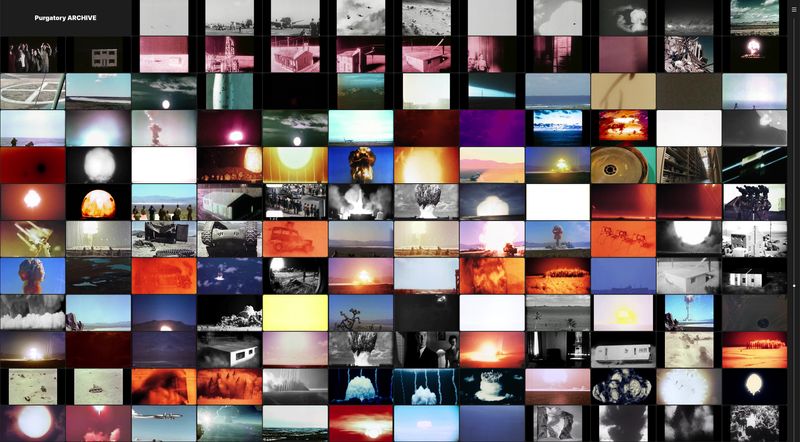
purgatory EDIT: Doomscroll Archive
part of purgatory EDIT
Purgatory EDIT: Doomscroll Archive is an archive of moving images dealing with the representation of violence and conflict. It is sourced using archival war footage, movie and documentary clips, advertisements, newsreels, landscape panoramas, and home videos that depict violence in categorically different forms.
The onsite installation and accompanying online open-access database together form an ongoing archive that critiques existing media representations and the glorification of violence and examines the power of hegemonic representation within visual and cinematic vocabularies. It questions what it means to be (post)human in a new digital regime marked by the erosion of living matter, conversion of life into big data, rising ethnofascism and disintegrating democracies.
As a participatory installation, the Doomscroll Archive is based on Antoin Artaud’s Theatre of Cruelty – “a means by which artists assault the senses of the audience”. It serves as a foundation to be able to examine the boundaries between aversion and enforcement, proclivity and phobia; to investigate the worth of worldviews derived from banal dichotomies such as ‘Good and Evil’ or ‘War and Peace’, in order to determine whether these meta-concepts make sense in the hyper-nuanced complexities of our world today.
How do sensory perceptions of peace and violence blend with a deep dive into an epoch when our lifeworlds will be highly encrypted, where nuanced engagements give way to simplified declaratives driven by the attention economy? How can hope to have new sympathetic encounters of equals? How can we replace the Internet of Things (IoT) with an Internet of Accountability – as a decolonial praxis? What does accountability mean when we are trapped within our own filter bubbles generated by algorithmic bias and an increasing digital divide? What role may poetry have in a world space generated by code?
More than at any other moment in human history, we are now confronted by contemporary borders that manifest as incarceration camps, penal colonies, detention facilities and refugee centres. Countries are gradually becoming prisons to confine and contain undesirable bodies. Well-being and welfare for citizens and ecology are being replaced by security and risk management. Conflicts simply becoming tools for neoliberal capitalism to recycle pain. Such violence leads to long-term trauma, helplessness and precarity, causing significant negative influences on our social fabric. Yet, in a hyper-digitised world, forms of violence remain invisible or unrecognised. Recognising and narrating such experiences become difficult unless we find ways to understand how violence is defined and applied across micro (interpersonal), meso (institutional), and macro (trans-societal) scales.
For these processes to be known, they must be explored, visualised, satirised and challenged. In times where violence, conflict, and trauma are normalised as everyday happenings, the Doomscroll Archive performs the task of critical storytelling of historical narratives. By bringing together local and geographically distant perspectives on constructing historical narratives that shape our political landscape, it encourages its audience to revise and reconsider what stories we tell and how we share them. It casts the audience, not as a passive spectator, but as a critical witness – not to the macro tides of history, but to the fate of those invisibilised and marginalised within these histories of power relations, where one’s humanism can be located in their siding with the downtrodden.